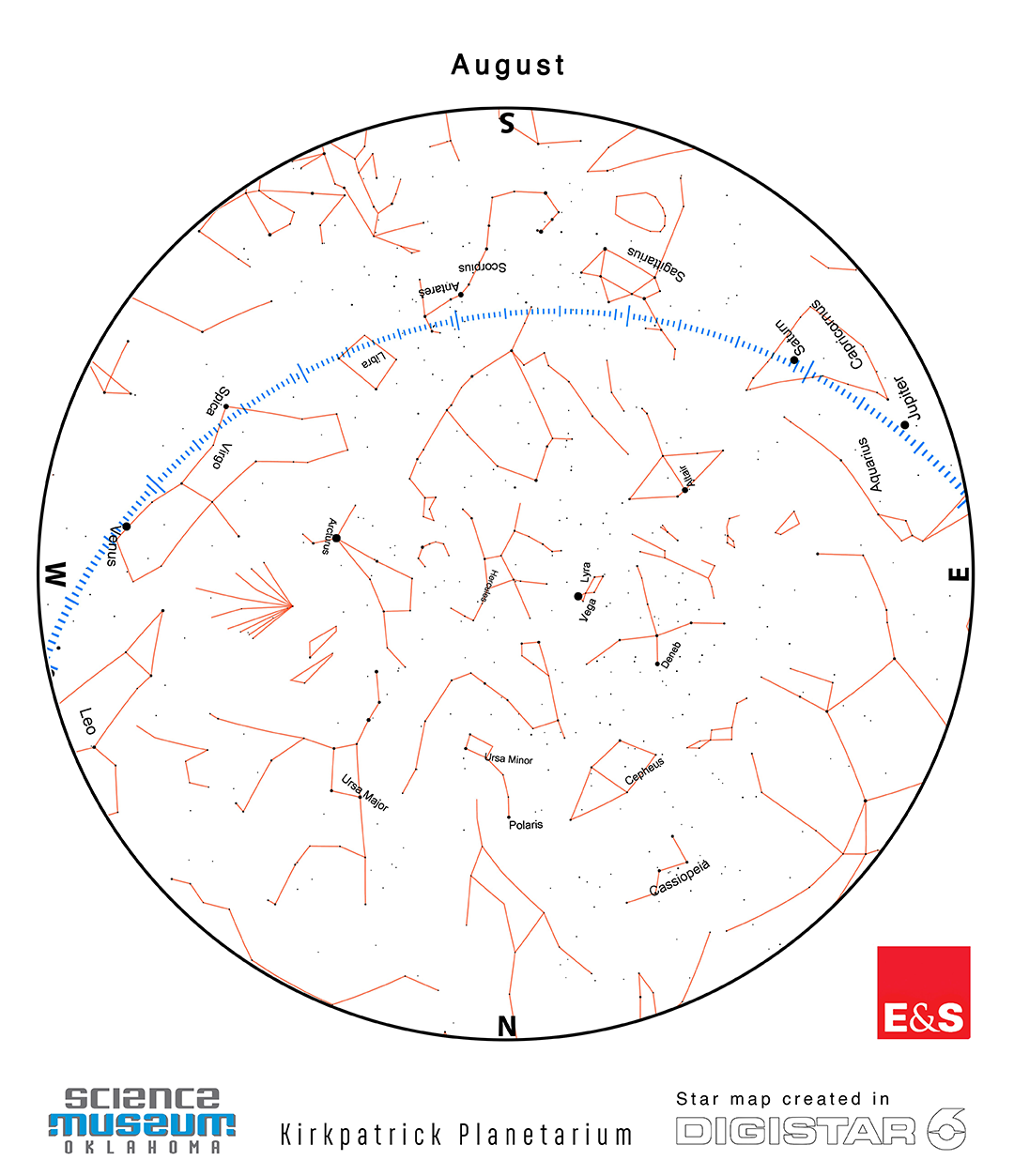Red Dirt Astronomy: Skies & Space for August 2022
August 1, 2022
Planets
Mercury – During August, Mercury will be low in the western sky at sunset. On August 27th it reaches it greatest angular distance from the sun called, greatest elongation. Normally, this would be a good time to observe the planet. However, this year, the angle of the ecliptic keeps the planet low in the sky.
Venus- Beginning August 1, Venus will reach a greater angular distance from the sun as we have seen recently. This will mean it will rise about an hour and forty-five minutes before sunrise. Yet it will still be a challenge to see in the glow of the rising sun.
Mars – Mars remains a morning object but moving from the constellation Pisces into Aries and finally finishing the month in Taurus. On August 2 the planet will be close to Uranus. The planet will rise around 12:45 am on August 1. On August 19, Mars will be near the moon.
Jupiter – On August 1, Jupiter will rise around 11 p.m. The planet will be in the constellation Cetus all month. The waning moon will be close by Jupiter on the 15.
Saturn- Rising about 9 p.m. on August 1, the planet will continue to rise earlier and earlier as the month progresses. By the end of the month it will be well placed in the eastern sky at sunset for observing. The moon will pass near the planet on August 11.
Uranus- Rising around midnight, it will be close to Mars on August 1 and close to the gibbous moon on the 18.
Neptune- Neptune will rise well after sunset and remain in the constellation near the border of Pisces and Aquarius.
Sky & Space Anniversary Events for August 2022
Aug. 4: Mars Phoenix Lander launched (2007)
Aug. 5: First Quarter Moon
Aug. 6: Mars Science Laboratory, Curiosity Rover, landed
Aug. 7: STS 85, Space Shuttle Discovery, launches, spending 11+ days in space (1997)
Aug. 8: STS 118, Space Shuttle Endeavour, launches, spending 12+ days in space (2007)
Aug. 12: Full Moon
Aug. 13: Perseid Meteor Shower (see below)
Aug. 14: Saturn at opposition, closest to Earth for the year
Aug. 15: Jupiter close to Moon
Aug. 19: Last Quarter Moon
Aug. 19: Mars close to Moon
Aug. 25: Venus close to Moon
Aug. 27: New Moon
Object of the Month: Perseid Meteor Shower 2022
The annual Perseid meteor shower radiant rises late in the evening, around 11 p.m. local time, nearly due northeast in the constellation Perseus. Perseids are best viewed from midnight to sunrise, but moonlight will outshine dim meteors all night in 2022. The greatest number of meteors will be visible after the radiant rises, but the shooting stars themselves can appear anywhere in the sky, seeming to trail from the radiant point.
Unfortunately, the moon will be up all night during the predicted peak of 2022’s Perseid meteor shower. However, note that this shower tends to rise to a peak gradually, and then fall off rapidly after the peak. That means you can watch for Perseid meteors in the week or 10 days before the peak. You won’t see as many meteor as you would in a dark, moon-free sky at the peak. But, in 2022, we don’t have a moon-free sky at the peak. Also note that the Perseids strengthen in number as late night deepens into the wee hours of the morning. The shower is often best before dawn. It is recommend you start watching in early August, from late evening to dawn. Watch on multiple mornings, until the waxing moon – brighter each night, and up for more hours – drives you back inside.


